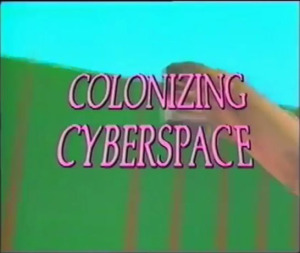
I’ve just come across some important blog essays by David Gaertner. One is Why We Need to Talk About Indigenous Literature in the Digital Humanities where he argues that colleagues from Indigenous literature are rightly skeptical of the digital humanities because DH hasn’t really taken to heart the concerns of Indigenous communities around the expropriation of data.
I’d like to advance one argument in this post as a starting point for further discussion: Indigenous lit scholars resist DH because the concerns Indigenous communities have about the expropriation of data have not been taken seriously. Those concerns will not be taken seriously until decolonial critique is actively installed at the foundations of DH theory and methodology and settler scholars need to start taking up some of this labour.
He compares this skepticism to how new media studies have been more willing to engage critique of colonialism. In another essay titled, How Should I Play These?: Media and Remediation in Never Alone, he asks about Indigenous-made video games, specifically Never Alone, and whether the form overcomes the remediated story.
“When it comes to Indigenous-made video games what is the “new” of New Media. The 2014 video game Never Alone has been lauded as cutting-edge gaming (Peckham) and identified as a new platform for Indigenous storytelling (Parkinson). All of the focus on technology, however, risks eliding the history and tradition that makes Never Alone legible as a uniquely Iñupiaq storytelling. This is not to say that tradition and innovation are mutually exclusive, however,—far from it. In this blog post I argue that Never Alone has seen such financial and cultural success because of the way it employs remediation, the refashioning of old media in the new. Turning to Keavy Martin and the Inuit notion of ikiaqtagaq (splitting or borrowing songs), I consider the local significance of remediation for the Iñupiaq and illustrate how to “read” this game as a vital and valuable contribution to Indigenous storytelling.”
In this essay he uses the notion introduced by Keavy Martin of ikiaqtagaq, or borrowing of songs, to think about how remediation can be ethical when there is acknowledgement and respect.
Gaertner does us a favour by challenging us in the digital humanities with important questions. When organizations like the Electronic Frontier Foundation talk about the digital as if it were a “frontier” to be settled we both misunderstand cyberspace and re-inscribe colonizing myths about the frontier and heroic behaviour there. The ownership of songs and data are not as simple as an ethic of “information wants to be free.”